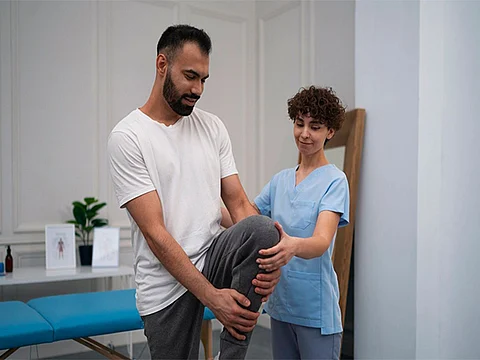NEET mandate, five-year BPT: Physiotherapy education in India enters new era
Physiotherapy education in India is headed for a major overhaul, with fresh regulations making NEET UG (National Eligibility-cum-Entrance Test for Undergraduates) the gateway for admissions and mandating a one-year internship post-graduation.
These changes, part of a broader standardisation effort across allied health sciences, also grant physiotherapy graduates the right to use the ‘Dr’ prefix, as long as it is followed by ‘PT’ to denote their specialisation.
The revised Bachelor of Physiotherapy (BPT) course will now span five years instead of four and a half, adopting an annual evaluation system in place of the earlier semester mode. This update comes as part of a new competency-based curriculum released jointly by the Ministry of Health and Family Welfare (MoHFW) and the National Commission for Allied and Healthcare Professions (NCAHP) earlier this week, as Careers360 reports.
The curriculum shift will take effect from the 2026–27 academic year and also applies to nine other allied health science courses, including Optometry, Dialysis Therapy, Radiology, and Nutrition. Experts say these reforms aim to bring consistency to a field long plagued by fragmented standards, varied course lengths, and inconsistent clinical training.
According to Prasad VG, member of NCAHP and Programme Co-ordinator at the Amrita Centre for Allied Health Sciences, the new curriculum marks the continuation of efforts started in 2011 to formalise recognition and licensing of paramedical professions. “Currently, there are no national standards of curricula, faculty and infrastructure… there are variations,” he told Careers360.
The syllabus now follows nine learning outcomes — from clinical care and communication to ethics, scholarship, and lifelong learning — with an emphasis on early and consistent clinical exposure. This approach, termed ‘horizontal and vertical integration,’ aims to synchronise theoretical instruction with practical application from the first year onwards.
A major highlight is the internship, now compulsory for all BPT students. The total course credits have also risen from 288 to 334. Assessment has been reworked to incorporate tools like OSCE (Objective Structured Clinical Examination), OSPE (Objective Structured Practical Examination), and multi-source feedback mechanisms, though experts have pointed out that clarity is still lacking on how these tools will be aligned with course content.
Institutions offering physiotherapy must now meet rigorous infrastructure and faculty requirements. Standalone physiotherapy colleges need at least 10 acres of land and a built-up area of 35,000 square feet.
Colleges must also either be attached to medical institutions or maintain tie-ups with hospitals to ensure adequate clinical exposure. The teacher-student ratio will remain at 1:10, and faculty will be required to undergo regular development programmes.
As for admissions, NEET UG scores will now determine entry into BPT, BOptom (Bachelor of Optometry), Nutrition and Dietetics, and Dialysis Therapy. While universities and states may continue conducting tests for Dialysis Technology, new national-level entrance exams are expected for courses like Physician Associate and Medical Radiology. Students pursuing other allied courses can continue to apply based on their Class XII performance.
The new structure also extends to previously overlooked areas such as Physician Associate and Applied Psychology, now included in the first phase of curriculum reform. Overall, NCAHP governs 56 allied health professions across 10 broad domains and sees this overhaul as the first of many.
However, the reforms aren’t without criticism. Dr Avinash Supe, Professor Emeritus at Seth GS Medical College, Mumbai, called the new curriculum “forward-looking” but flagged key issues. He noted the lack of clarity in assessment tools, missing details on Bloom’s Taxonomy application, and the absence of a structured competency progression model.
Meanwhile, NCAHP has clarified that since most paramedical institutes have already begun their 2025–26 admissions, these norms will only apply from the following year. The commission has also placed a freeze on new programmes and college expansions until the regulatory licensing process is finalised.
Looking ahead, NCAHP has also called for the appointment of five physiotherapists in all government primary health centres, especially in rural areas, to raise awareness and offer early intervention in paediatric, orthopaedic and neurological conditions.



